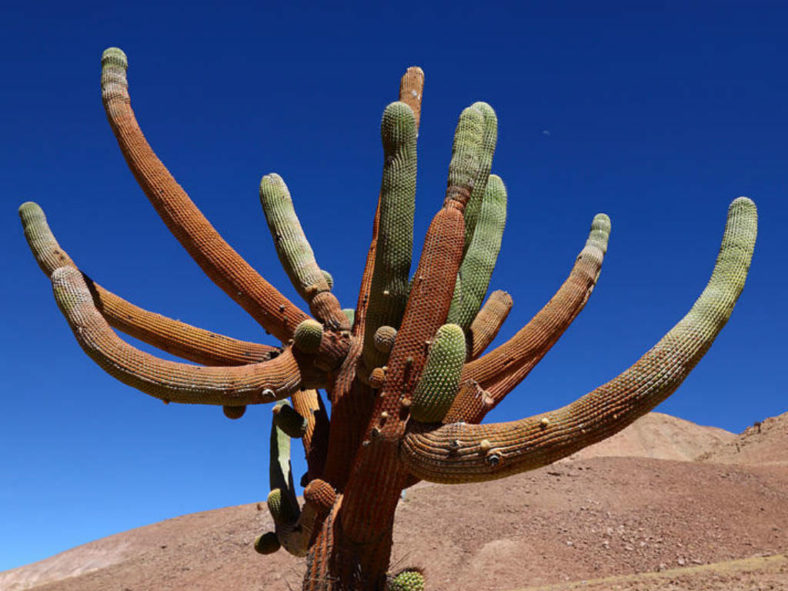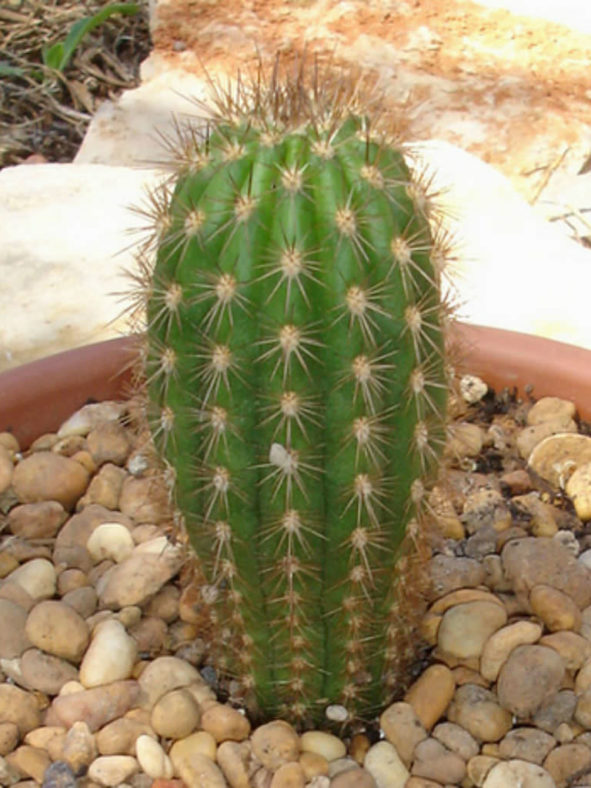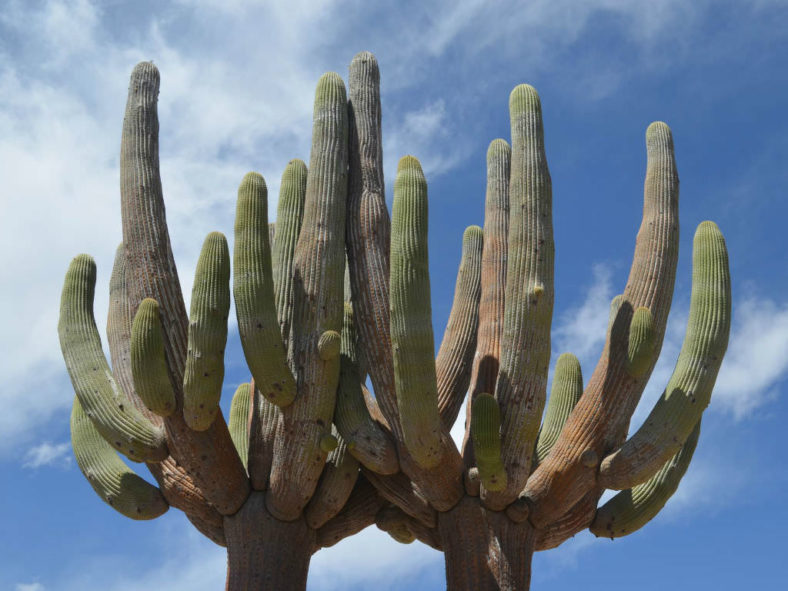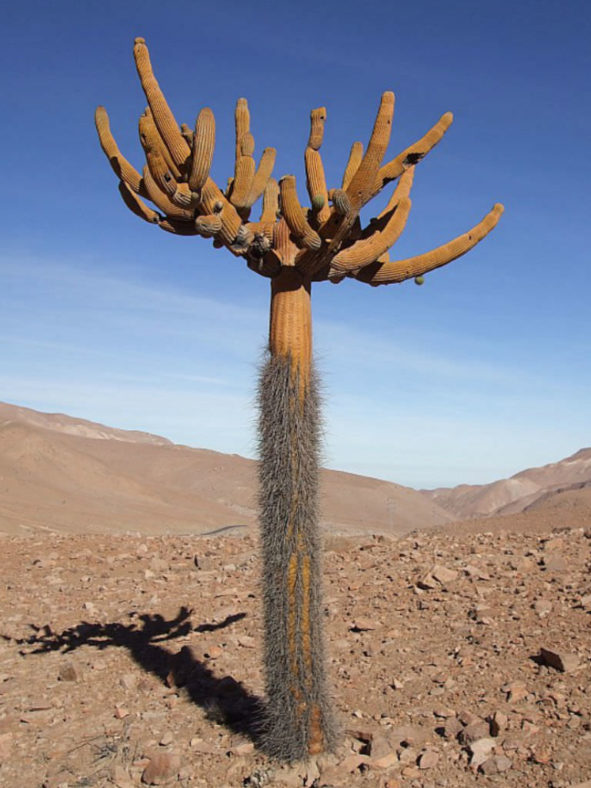Scientific Name
Browningia candelaris (Meyen) Britton & Rose
Common Name(s)
Candleholder Cactus
Synonym(s)
Cactus candelaris
Scientific Classification
Family: Cactaceae
Subfamily: Cactoideae
Tribe: Browningieae
Genus: Browningia
Origin
Browningia candelaris is native to northern Chile and southern Peru. It occurs in arid areas at elevations ranging from 5,250 to 9,200 feet (1,600 to 2,800 m).
Description
Browningia candelaris is a tree-like cactus with a distinct unbranched trunk and a crown of branching thinner stems that may be entirely spineless or bear spines reduced to a few bristles. It can grow up to 20 feet (6 m) tall. The trunk is densely covered with straight, brown spines measuring up to 6 inches (15 cm) long and can reach up to 20 inches (50 cm) in diameter. The branches have about 50 ribs. The spines on the trunk are straight and brown and can grow up to 6 inches (15 cm) long. Each areole bears 20 to 50 spines.
The white, tubular flowers appear in summer and can reach up to 7 inches (12.5 cm) long. The edible fruits are yellow when ripe and can grow up to 3 inches (7.5 cm) long.

Hardiness
USDA hardiness zones 10a to 11b: from 30 °F (−1.1 °C) to 45 °F (+7.2 °C).
How to Grow and Care
Like most cacti, Cereus are fairly low-maintenance and hardy. Ensure they receive enough water without becoming waterlogged, especially during the summer, and fertilize them for best results. If the roots have become black or overly soft, the cactus could be experiencing root rot – cut away the affected parts and replant. Like all cacti, give them lots of direct sunlight, especially during the summer. Well-drained soil is best, and most Cereus cacti perform well in soil that contains some organic material. Some recommend avoiding soil that contains sphagnum moss, though – it can make the cactus vulnerable to root rot.
It may become necessary to repot your Cereus if it outgrows its container. If so, ensure the soil is dry and remove the pot.
See more at How to Grow and Care for Cereus.
Links
- Back to genus Browningia
- Succupedia: Browse succulents by Scientific Name, Common Name, Genus, Family, USDA Hardiness Zone, Origin, or cacti by Genus
Photo Gallery
Click on a photo to see a larger version.


